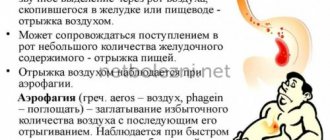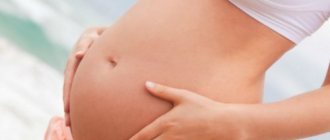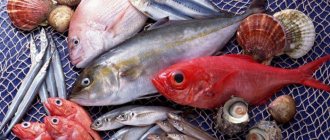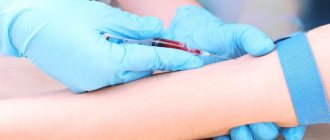Food poisoning is a very common problem and one of the most common causes of intoxication in the body. There is a huge list of products that can cause poisoning. Chicken eggs occupy far from the last place, because this product in one form or another is present in the human diet almost every day. They are eaten boiled, fried and raw. In addition, it is one of the main components of many dishes, desserts and baked goods. In terms of nutritional value, an egg can replace 50 grams of meat or a glass of fresh milk. In addition, this product contains many vitamins, microelements and is easily absorbed by the body.
Despite the huge number of beneficial qualities of eggs, they can harm the human body. What can cause poisoning?
Causes
The main cause of poisoning when eating eggs is infection with salmonella, in this case we can talk about the development of salmonellosis in a person.
Salmonella are rod-shaped bacteria capable of active movement using flagella. They are quite stable in the environment and can reproduce in the intestinal lumen of humans, many animals and a number of birds. Salmonella produces 2 types of toxins:
- Exotoxins that are produced by living bacteria. The enterotoxin released by salmonella disrupts intestinal function, and the cytotoxin promotes cell destruction.
- Endotoxin, which is released and begins to act only after the death and destruction of the bacterium. It causes general intoxication with disruption of the heart, brain and other organs.
Eggs from chickens with salmonellosis can be infected even before their shells are formed, because salmonella can penetrate the ovaries of birds and infect the eggs maturing in them. In this case, both the white and the yolk will be 100% infected. There is also a situation when salmonella enter the egg during its passage through the oviparous tract. Bacteria penetrate through the pores of the shell and nest on its inner surface, gradually spreading to the white.
It is also possible that the laid egg is still sterile on the inside, but contaminated with salmonella on the outside. In this case, bacteria gradually infect the inner surface of the shell (during the storage period) or enter the prepared food when an unwashed egg is broken.
When does egg poisoning occur?
Factors that contribute to egg poisoning:
- Avoid washing raw egg shells before using them.
- Long-term storage of eggs. At the same time, they still do not show signs of spoilage, but may already be abundantly covered with salmonella colonies.
- Eating eggs raw or undercooked.
For example, they are included in mayonnaise and some other sauces, mousses, and creams for culinary products. And many people prefer boiled or fried eggs with a semi-liquid yolk.
Salmonella is not found on all eggs. But it is impossible to predict whether an egg is infected with these bacteria, because they do not cause spoilage and do not lead to the appearance of any external changes on its surface.
For what reasons does poisoning occur?
At the moment, the most commonly eaten eggs are chicken and quail eggs. The nutritional value of eggs does not depend in any way on shell color or size.
Chicken eggs are used not only as an independent dish (omelet, poached eggs, hard-boiled or soft-boiled, salted, pickled, baked), they are also significant ingredients in the preparation of pastries and desserts, cutlets, scrambled eggs, eggnog, some cocktails, homemade mayonnaise, croutons and other dishes. Quail is more often used to replace chicken during complementary feeding in children, as well as for allergic reactions, and naturally, as an independent dish in ready-made (boiled, fried) or raw form.
Yolk is a traditional complementary food for babies 8-9 months old
Difference between quail and chicken eggs:
| Differences | Quail | Chicken |
| Weight, shell color | 9-12 g, motley | 35-57 g, from white to brown, depending on the color of the chicken |
| Content of vitamins and minerals | Contains vitamins: A, PP and group B. Rich in essential amino acids, calcium, iron, phosphorus, copper, potassium, molybdenum, lecithin, unsaturated fatty acids, proteins, carbohydrates and fats. | Rich in calcium, phosphorus, potassium, magnesium, sulfur, iron, iodine, zinc, manganese, chromium, fluorine, boron and cobalt. In addition, it contains choline, proteins, carbohydrates, fats, saturated fatty acids, lecithin and B vitamins, vitamins C, E, A, D. |
| Calorie content per 100 g | 168 | 157 |
| Beneficial features | They replenish the body’s need for nutrients, strengthen bones, protect the liver from the effects of toxins, stimulate mental development in children, regulate the effects of “bad” cholesterol, and strengthen the body’s immune forces. | They are beneficial for the gastrointestinal tract, improve blood circulation, prevent cataracts and protect the optic nerves, reduce the incidence of cancer pathologies, and reduce the risk of pulmonary diseases and diseases of the nervous system. |
| Harmful properties | Salmonellosis, high cholesterol | Salmonellosis, increased cholesterol when eating more than 2 eggs per day |
Thus, we see that the benefits of eggs for the human body are obvious, and, therefore, they should be present in the daily diet of every person. However, you should treat this product with some caution, since poisoning with any type of eggs can lead to unpleasant consequences.
The most common causes of poisoning are:
Failure to comply with egg storage conditions
. Normally, eggs can be stored from 7 to 25 days, at a temperature of 0-20 C. In case of temperature changes (storage in places with a low temperature, and then in a higher temperature), their shelf life is significantly reduced, which affects the quality of the product , or the product is seriously deteriorated.
Failure to comply with hygiene standards when preparing food
– kitchen surfaces, cutlery and dishes may contain particles of other products or microbes, which, if in contact with fresh food, can lead to a deterioration in its quality. To avoid such situations, you need to thoroughly clean the kitchen, monitor the cleanliness of kitchen utensils, and also prevent flies, cockroaches and other insects from living in the room.
Improper cooking of eggs
– an incompletely cooked product can be a source of harmful microorganisms, therefore proper heat treatment is extremely important, this is how pathogenic bacteria die.
Salmonellosis
– Salmonella, the causative agent of acute zoonotic intestinal infection, can be found in eggs quite often. Salmonella bacillus causes serious damage to the gastrointestinal tract, is accompanied by intoxication syndrome and disturbances in water-electrolyte balance, and can also have a typhoid-like or septicopyemic course. Most people who are interested in whether it is possible to be poisoned by raw eggs should know that it is the raw product that contains salmonella, and it dies only if the eggs are sufficiently heat treated.
It is also worth noting that even such a small thing as washing them after purchase affects the shelf life of eggs. For example, washed eggs can be stored in the refrigerator for no more than 12 days, while unwashed eggs can be stored for up to 20 days.
If you don’t know what to do, seek advice from an ambulance
Symptoms
Egg poisoning is most often a gastrointestinal form of acute salmonellosis.
Characteristic signs of the disease include:
- nausea, single or repeated vomiting;
- diarrhea (diarrhea);
- moderate abdominal pain of various types, often cramping;
- bloating due to increased gas formation (flatulence);
- increased peristalsis of the small intestine with the appearance of rumbling;
- signs of general intoxication (malaise, headache, weakness), increased body temperature, a tendency to lower blood pressure.
With severe intestinal disorders, the poisoned person soon shows signs of dehydration, which negatively affects his well-being. If the course of the disease is unfavorable, a generalized form of salmonellosis develops, when signs of toxic damage to the heart, kidneys, liver, and brain are noted. The condition of the poisoned person is serious and requires urgent hospitalization; fortunately, this form is rare.
Publications in the media
Poisoning (intoxication) is a pathological condition that occurs when the body is exposed to a chemical compound (poison) that causes disruption of vital functions and creates a danger to life.
Frequency • In recent years, especially in Russia, there has been a constant increase in the number of household poisonings. In addition, criminal acute poisonings are recorded more often • Acute poisonings - 200-300 people (3-5% of all patients) per 100,000 population per year (for comparison, MI - 70-80 per 100,000) • Every fifth patient with poisoning ends up in hospital in critical condition • Accidental poisonings account for about 80%, suicide - 18%, occupational - 2% of poisonings •• Currently, an average of about 120 non-fatal and 13 fatal suicidal poisonings per 100,000 inhabitants per year are recorded worldwide •• Mental illnesses - the cause of 10–15% of suicidal poisonings • Predominant age •• 13–35 years •• In Western Europe and the USA, about 50% of poisonings occur in children (in Russia - no more than 8%). The main reason is taking drugs • Predominant gender •• Suicidal poisoning - female •• Accidental household poisoning (especially alcohol and drug intoxication) - male. Etiology. There are over 500 toxic substances that cause the largest number of acute poisonings. Risk factors • Alcoholism, substance abuse, drug addiction • Frequent stress, unfavorable family environment, material and domestic problems • The tension of modern living conditions, causing in some people the need to constantly take sedatives • Mental illness • Poorly controlled sale of drugs, uncivilized advertising • Self-medication, turning to various kinds of healers, charlatans, out-of-hospital termination of pregnancy • Occupational hazards (chronic poisoning) • Improper storage of drugs and chemicals at home (more often leads to poisoning in children).
Classifications of poisoning • Depending on the cause and place of occurrence •• Accidental ••• Industrial ••• Household: self-medication, drug overdose, alcohol and drug intoxication, carbon monoxide, mushroom poisoning (pale toadstool, fly agarics, etc.), reptile bites, insects ••• Medical errors •• Intentional ••• Criminal ••• Suicidal. • Poisonings can be single, group (often family), multiple, mass (CAB, industrial poisoning). • Depending on the method of entry of poison into the body •• Oral (usually household) •• Inhalation •• Percutaneous (injections, snake and insect bites) •• Cavitary poisoning (poison entering the rectum, vagina, external auditory canal).
• According to the clinical picture •• Acute poisoning occurs with a single intake of poison into the body and is characterized by a sharp onset and pronounced specific symptoms •• Chronic poisoning develops with prolonged, often intermittent intake of poisons in subtoxic doses •• Subacute poisoning (with a single injection of poison into the body clinical the development of poisoning is slow) is rarely observed. • Depending on the severity •• Light •• Moderate •• Heavy •• Extremely severe.
Pathogenesis - Acute poisoning can be considered as a chemical injury that occurs when a toxic dose of a chemical substance comes into contact with or enters the body. • Clinical stages of acute poisoning •• Toxigenic (early - from 1 hour to 2-3 days) - specific effects on the body of a toxic substance (impaired function of membranes, proteins and other toxicity receptors) •• Somatogenic - adaptive reactions of the body aimed at eliminating violations homeostasis (pituitary-adrenal reaction, lysosomal reaction, centralization of blood circulation, reaction of the blood coagulation system); trace lesions of various organs that occur after the removal or destruction of a toxic agent.
• Toxicological classification of poisons •• Neurotoxic effects (impaired mental activity, toxic coma, suffocation, convulsions and paralysis) - drugs (cocaine, opium, lysergic acid diethylamide), hypnotics, alcohol and its surrogates, carbon monoxide, FOS (chlorophos, karbofos ), nicotine; anabasine, BOV (VI-X, B-Z, Sarin), isoniazid derivatives •• Cardiotoxic effects (rhythm and conduction disturbances, toxic myocardial dystrophy) - cardiac glycosides, TAD, plant poisons (quinine, aconite), barium, potassium salts • • Pulmonotoxic effect (toxic pulmonary edema) - nitrogen oxides, BOV (phosgene, diphosgene) •• Hepatotoxic effect (toxic hepatopathy) - chlorinated hydrocarbons (dichloroethane), poisonous mushrooms (pale toadstool), phenols, aldehydes •• Nephrotoxic effect (toxic nephropathy ) - salts of heavy metals, ethylene glycol, oxalic acid •• Substances that disrupt the transport and utilization of oxygen (hemolysis, methemoglobinemia, carbhemoglobinemia) - aniline and its derivatives, nitrites, arsenous hydrogen, hydrocyanic acid and its derivatives, carbon monoxide, BOV (cyanchloride ) •• Skin-resorptive effect (local inflammatory and necrotic changes in combination with general toxic phenomena) - dichloroethane, hexachlorane, BOV (mustard gas, lewisite), acids and alkalis, arsenic and its compounds, mercury (sublimate) •• Tear-producing and irritating effect (irritation of external mucous membranes) - chloropicrin, BOV (ci-es), vapors of concentrated acids and alkalis.
Clinical diagnostics is aimed at identifying symptoms of effects on the body that are specific to a substance or group of substances. Timely recognition of acute poisoning is often very difficult: the doctor usually cannot use auxiliary research methods or consultations (lack of time due to the need to provide urgent medical care), uncertainty of the causative factor, complexity of the situation (especially in criminal poisonings), reluctance of the patient or surrounding people to provide necessary data (for example, for drug addiction, substance abuse). • In most cases, with a careful study of clinical symptoms and anamnesis (among accompanying persons, relatives, the victim), it is possible to approximately establish the type of toxic substance that caused the poisoning (alcohol, sleeping pills, cauterizing liquids, etc.).
• At the scene of the incident, it is necessary to find out the cause of poisoning, the type of toxic substance, the route of entry into the body (drug sets, empty or whole vials, bottles, ampoules, syringes, characteristic odor), time of poisoning, concentration of the toxic substance in the solution, its quantity. This and other information (concomitant alcohol consumption, whether there was vomiting, etc.) may be decisive not only in determining the diagnosis, but also in prescribing treatment measures. • The importance of anamnestic data should not be overestimated, especially in cases of suicidal poisoning. • Medicines, other chemicals, food remains found at the scene of the incident should be sent along with the patient to the place of his hospitalization.
Leading symptom complexes of acute poisoning • The smell emanating from the patient and his secretions , in many cases allows one to verify the type of poisoning: •• Alcoholic - poisoning with alcohol (ethanol, methanol) •• Ammonia - poisoning with aqueous ammonia solution, uremia •• “Disinfections” - poisoning with phenol and carbolic acid compounds •• Rotten radish - poisoning with selenium anhydride (selenium dioxide) and other selenium derivatives •• Bitter almonds - poisoning with hydrocyanic acid and cyanides; nitrocyclohexane •• Pear - poisoning with chloral hydrate •• Rotten apples - poisoning with acetone, varnish and paint solvents; hyperglycemic coma, ketoacidosis •• The smell of freshness with an ozone tint - potassium permanganate poisoning •• Kerosene-chlorine - poisoning with organochlorine compounds •• Horse sweat - saturation of the body with penicillin and its derivatives •• Unpleasant specific, with a metallic taste in the mouth and salivation - mercury poisoning oxide •• Stale fish, raw liver - liver failure, hepatic coma •• Acute irritant - paraldehyde poisoning •• Burnt meat - pneumonia caused by Klebsiella •• Sharp menthol - poisoning with menovazine, menthol alcohol •• Shoe paint - nitrobenzene poisoning •• Turpentine (“resinous smell”) - poisoning with turpentine, turpentine-containing polishes and solvents •• Sweet-liqueur - dichloroethane poisoning •• Alcohol-fusel - antifreeze poisoning •• Sweet alcohol - poisoning with brake fluid (ethylene glycol) •• Rotten eggs (from the mouth and from feces) - poisoning with carbon disulfide, hydrogen sulfide, mercaptans; putrefactive dyspepsia •• Acetic – poisoning with vinegar, acetaldehyde •• Violets (from urine) – turpentine poisoning •• Chlorine (sharp, “prickly” smell) – hydrochloric acid poisoning •• Garlic – poisoning with phosphorus, arsenic, tellurium and their compounds (differentiate from the smell of eaten garlic) •• Essential - poisoning with ether, ethylene oxide, ethylene chlorohydrin. • Skin •• Hyperemia, hyperthermia of the skin - poisoning with atropine, belladonna; sometimes - with botulism •• Traces from multiple injections, small hematomas (especially in the area of the elbow or on the hips) - suspicion of drug addiction, morphinism (however, they also occur in patients with diabetes, bronchial asthma, etc.) •• Bullous detachment of the skin occurs when severe poisoning with trichlorethylene, hexachlorobenzene, barbiturates •• Increased sweating - poisoning with FOS, salicylates, muscarinic substances, mushrooms •• Skin color in case of poisoning: iodine - pale; boric acid, carbon monoxide - bright red; picric acid, quinacrine, nitric acid - yellow; silver salts - bluish-black; bromides - brown; aniline, cyanides, nitrates, iodine carbonate - cyanotic. • Eye symptoms •• Constriction of the pupil (miosis) - poisoning with opiates, FOS, drugs containing physostigmine, pilocarpine, ipecac, chloral hydrate, etc. •• Pupil dilation (mydriasis) - poisoning with atropine, cocaine, ether, chloroform, antihistamines, papaverine hydrochloride, etc. •• Nystagmus is a characteristic sign of severe poisoning with barbiturates, ethanol, carbon monoxide, glycols •• OPC poisoning is accompanied by lacrimation •• With methanol poisoning, hyperemia of the optic disc often develops •• Marijuana poisoning is characterized by the development of conjunctivitis. • Oral cavity and tongue •• Excessive salivation - poisoning with FOS, strychnine, salicylates, thallium salts, arsenic, mercury, mushrooms, nicotine •• Dry mucous membranes - poisoning with atropine, ephedrine, dope, opiates •• Poisoning with caustic substances - inflammatory changes in the mucous membrane membranes •• In case of poisoning with salts of mercury, lead, bismuth and arsenic, the periodontal areas of the gums acquire a gray tint. • Gastrointestinal tract. Most poisonings (not only oral) are characterized by nausea, vomiting, impaired intestinal function (diarrhea or constipation) •• Intestinal colic is most intense in case of poisoning with compounds of mercury, arsenic, lead, thallium, FOS, mushrooms •• Heavy diarrhea - in acute poisoning salts of arsenic, heavy metals (iron, copper) •• Constipation - in case of poisoning with opiates, lead salts •• Bloody vomiting occurs in case of poisoning with salts of heavy metals, caustic substances, salicylates, boric acid, etc.; characterized by tension in the anterior abdominal wall, pain on palpation, rapid intestinal peristalsis •• Feces acquire a blue-green tint when poisoned with boric acid.
• Respiratory system . In acute poisoning, respiratory failure quickly develops due to hypoxia and hypoxemia, inhibition of the function of the respiratory center, dysfunction of the respiratory muscles, and aspiration-obstructive processes in the respiratory tract. The blood pressure changes (in most cases - towards acidosis) •• Slowing of breathing - poisoning with opiates, alcohol and its surrogates, tranquilizers, antihistamines •• Rapid breathing - poisoning with carbon monoxide, acetylsalicylic acid, gasoline, etc. •• Toxic pulmonary edema occurs for poisoning with gases (chlorine, phosgene, nitrogases, etc.), FOS, barbiturates, heroin, etc.
• SSS. Syndromes of toxic damage to the heart and blood vessels are initially expressed by the development of primary toxic shock (with impaired blood clotting and toxic coagulopathy). Then comes secondary somatogenic collapse. Acute toxic myocardial dystrophy develops •• Tachycardia - poisoning with alcohol, atropine, acetylsalicylic acid, ephedrine, theophylline, etc. •• Bradycardia - poisoning with cardiac glycosides, mushrooms, opiates, etc. •• Arterial hypertension - poisoning with nicotine, lead salts, ephedrine, sympathomimetics •• Arterial hypotension - poisoning with barbiturates, tranquilizers, ganglion blockers, neuroleptanalgesics, etc. •• Arrhythmias - poisoning with arsenic salts, cardiac glycosides, isoniazid, tranquilizers, etc. • Liver damage . The most aggressive effects on the liver are chlorinated hydrocarbons (dichloroethane, carbon tetrachloride), organochlorine pesticides, carbolic acid, phosphorus, toadstool poison, vinegar essence, FOS. Hepatic coma develops rapidly, and hemorrhagic syndrome increases in parallel. • Kidney damage . The most aggressive nephrotoxins are ethylene glycol, salts of mercury, chromium, lead, oxalic acid, potassium dichromate (chrompic), arsenic compounds, dichloroethane. Victims quickly develop toxic nephropathy with acute renal failure •• I stage of acute renal failure - symptoms of poisoning predominate; impaired renal function may not appear immediately, but after 2–4 days; the main criterion for acute renal failure is diuresis and urine density •• stage II acute renal failure - oliguria, anuria, hyperkalemia, hyperazotemia, metabolic acidosis, increased creatinine in the blood and urine •• In most cases, combined damage to the kidneys and liver occurs (toxic hepatopathy with toxic nephropathy) . • Psychoneurological disorders . Acute poisoning is usually accompanied by a syndrome of mental, neurological and somatovegetative changes •• Movement coordination disorders (ataxia) - poisoning with ethanol, barbiturates, atropine, nicotine, hallucinogens •• Coma - poisoning with sleeping pills, tranquilizers, antihistamines, narcotic and sedatives; coma can be a consequence of severe poisoning with acids, paraldehyde, methanol, ethylene glycol, heavy metal salts, FOS •• Convulsive syndrome - poisoning with camphor, organochlorine insecticides, FOS, strychnine, lead salts, mushrooms, nicotine, caffeine; convulsive twitching of individual muscle groups is characteristic of poisoning with nicotine, lithium salts, strychnine, camphor, FOS, cholinergic drugs •• Paralysis - botulism, poisoning with salts of heavy metals •• Paresthesia - poisoning with camphor, organochlorine pesticides, cocaine •• Hyperthermia - poisoning with belladonna, quinine , boric acid, salicylates •• Personality changes - poisoning with hallucinogens (especially LSD), ethanol, barbiturates, antihistamines.
Laboratory studies • Specific toxicological studies for emergency detection of toxic substances in biological media of the body (blood, urine, cerebrospinal fluid) •• Isolation of toxic substances from biological material ••• Extraction of poisons with organic solvents (barbiturates, alkaloids, FOS) ••• Distillation (alcohols , organic solvents, etc.) ••• Mineralization (metals) ••• Destruction (heavy metals, etc.) •• Gas-liquid chromatography •• Thin-layer chromatography •• Spectrophotometry • Specific studies to determine characteristic changes in the biochemical composition of blood (for example, methemoglobinemia in case of poisoning with aniline and nitrites, decreased activity of blood cholinesterases in case of poisoning with FOS) • Nonspecific biochemical studies for the diagnosis of toxic damage to the functions of the liver, kidneys and other systems (for example, determination of the content of bilirubin, creatinine, urea, residual nitrogen, etc. in the blood).
Special studies • EEG (differential diagnosis of poisoning with psycho- and neurotropic toxic substances, especially in victims in a comatose state, as well as to determine the severity and prognosis of poisoning) • ECG (assessment of the nature and degree of toxic damage to the heart, diagnosis of rhythm and conduction disorders) • Oxygenometry and spirography • Fibrobronchoscopy (emergency diagnosis and treatment of chemical burns of the upper respiratory tract) • Emergency FEGDS (assessment of the degree and type of chemical burn of the esophagus and stomach) • In the emergency diagnosis of toxic damage to the liver and kidneys, radioisotope methods are essential.
TREATMENT Acute poisoning is characterized by a sudden development of clinical symptoms and syndromes. The adaptive mechanisms of the patient’s defenses do not have time to mobilize, so it is impossible to delay in providing assistance! Management tactics - all victims with clinical signs of acute poisoning are subject to urgent hospitalization in specialized toxicology centers • Acceleration of the removal of toxic substances from the body (active detoxification) • Specific (antidote) therapy • Symptomatic therapy.
Active detoxification of the body • Preventing the absorption of poison •• Emetics (apomorphine, tincture of ipecac) or inducing vomiting by irritating the back of the throat. Contraindications ••• Early childhood (up to 5 years) ••• Poisoning with cauterizing poisons (repeated passage of acid or alkali through the esophagus can worsen the burn) ••• Stuporous or unconscious state •• Gastric lavage through a tube is especially important in the prehospital stage. To lavage the stomach, use 10–30 liters of water at room temperature in portions of 300–500 ml. The first portions of stomach contents are saved for examination. In case of severe poisoning (especially with narcotic poisons and FOS), repeat gastric lavage every 4–6 hours (since it is possible that poison can re-enter the stomach from the intestines as a result of reverse peristalsis and the reflux of bile containing a number of unmetabolized substances into the stomach); the procedure is completed if there are no toxins in the wash water. You can add to the water: activated carbon; egg whites (from three eggs per 2 liters of water); magnesium oxide (burnt magnesia - 20 g per 1 liter of water); antidote (if the poison is known); enterosorbents (enterosorb, polyphepam.). In comatose states, the stomach should be washed after tracheal intubation, which completely prevents aspiration of vomit ••• Indications ••• Acute oral poisoning with any toxic substance (in case of severe poisoning with highly toxic compounds such as chlorinated hydrocarbons or FOS contraindications to there is practically no emergency tube gastric lavage) ••• A short period of time (no more than a day) from the moment of taking the poison (barbiturates, amitriptyline, FOS are found in the stomach contents 12 hours or more after their ingestion, dichloroethane - up to 9 hours, acetic acid - up to 12 hours) ••• Relative contraindications ••• Convulsions or convulsive readiness ••• Poisoning with acids, alkalis or other caustic substances (it is currently believed that the danger of inserting a probe in these cases is exaggerated; on the contrary, the use of this method in prehospital stage allows to reduce the prevalence of chemical burns and reduce mortality) ••• Stuporous or unconscious state when tracheal intubation is impossible (gastric lavage should be postponed until the hospital) ••• Patient resistance ••• Complications ••• Insertion of a probe into the trachea with damage to the vocal cords; in case of untimely diagnosis - injection of lavage fluid into the lung (acute respiratory failure, death) ••• Aspiration of lavage water and stomach contents ••• Ruptures of the mucous membrane of the pharynx, esophagus, stomach ••• Injury to the tongue, complicated by bleeding and aspiration of blood ••• Damage to teeth when using a mouth opener ••• Prevention of complications ••• The probe should be lubricated with petroleum jelly; the size of the probe must correspond to the physical characteristics of the patient ••• Toilet of the oral cavity ••• With an increased pharyngeal reflex - administration of atropine ••• In unconscious patients, mandatory intubation of the trachea with a tube with an inflatable cuff ••• It is necessary to ensure that the probe is in the stomach cavity (if it enters the trachea - a pronounced cough, air flow during breathing) ••• Complete removal of the last portion of lavage water, which is achieved by inserting a probe to different depths and moderate pressure on the epigastric region (aspiration of rinse water is possible when emerging from a comatose state, when intubation the tube is removed after the reflexes are restored) •• Adsorption of the toxic substance and removal of the toxic substance from the intestine ••• Adsorbents (for example, activated carbon, carbolene) are administered immediately after gastric lavage and at a later date (with secondary excretion of the substance into the intestine) in a dose exceeding the expected amount of a toxic substance by 5–10 times (usually 20–30 g) ••• Laxatives (sodium or magnesium sulfate, sorbitol solution with activated carbon; in case of poisoning with dichloroethane, carbon tetrachloride, chloroform, instead of a saline laxative, 100 ml of petroleum jelly is administered through a tube) is used in case of poisoning with a substance that is slowly absorbed in the intestines, ineffectiveness or untimeliness of gastric lavage. Laxatives have no independent value for accelerated detoxification of the body ••• Cleansing enema (use is controversial: possible increased absorption of toxins; high risk of developing hyperosmolar coma; ineffective in the first hours after poisoning) ••• Pharmacological (10–15 ml 4% r- ra potassium chloride with 40% glucose solution IV and 2 ml of pituitrin IM) and electrical stimulation of the intestines (using a special apparatus) ••• Direct intubation of the intestines and the introduction of special solutions (intestinal lavage) •• With inhalation In case of poisoning, the victim should be taken out into clean air, the airway should be ensured, and oxygen should be inhaled. Treatment is prescribed depending on the type of substance that caused the poisoning •• If toxic substances get on the skin, wash the skin with running water •• When introducing toxic substances into cavities (rectum, vagina, bladder), they should be washed using enemas, douching etc.
• Acceleration of the elimination of toxic substances from the body •• Forced diuresis ••• Compensation for hypovolemia and water load: plasma-substituting solutions (polyglucin, hemodez), 5% glucose solution in a volume of 1–1.5 liters intravenously •• • Administration of a diuretic: 30% urea solution or 15% mannitol solution IV in a bolus at a dose of 1 g/kg; furosemide 80–200 mg IV ••• Continued water load with solutions of electrolytes; the rate of administration of the solution should correspond to the rate of diuresis (800–1200 ml/h) ••• Sodium bicarbonate (4% solution 500–1500 ml/day IV drip) - in case of poisoning with chemicals with an acid reaction solutions , barbiturates, salicylates, hemolytic poisons; 5% solution of ascorbic acid IV - in case of poisoning with phencyclidine, amphetamine and fenfluramine ••• The method is contraindicated in case of cardiovascular failure, impaired renal function with oliguria, azotemia •• Plasmapheresis is performed using centrifuges or special separators. Usually about 1.5 liters of plasma are removed, replacing it with saline solutions or fresh frozen plasma •• Detoxification hemosorption - perfusion of the patient’s blood through a detoxifier with activated carbon or another type of sorbent •• Hemodialysis using an “artificial kidney” apparatus according to the speed of blood purification from poisons (clearance) is 5–6 times higher than the method of forced diuresis •••
Conditions for carrying out: sufficient concentration of the toxic substance in the plasma; easily broken connection of poison with protein; free passage of a toxic substance through the dialysis membrane ••• Contraindication - acute cardiovascular failure •• Peritoneal dialysis is used to remove toxic substances that can be deposited in fatty tissues or bind tightly to plasma proteins. Sterile dialysate fluid, heated to 37 °C, in an amount of 2 liters, is introduced into the abdominal cavity through a sewn-in fistula and replaced every 30 minutes. The method can be used for acute cardiovascular failure. Contraindications: severe adhesions in the abdominal cavity and late pregnancy •• Replacement of the recipient's blood with donor's blood is indicated for acute poisoning with chemicals that cause the formation of methemoglobin, long-term decrease in cholinesterase activity, massive hemolysis. Contraindication: acute cardiovascular failure.
Specific (antidote) therapy is effective in the early phase of acute poisoning - from the first hours to 2-3 days (for poisoning with heavy metal salts - up to 8-12 days); used subject to reliable diagnosis of the type of intoxication. The main mechanisms of action of antidotes • Inactivating effect on a toxic substance in the gastrointestinal tract (for example, the introduction of various sorbents into the stomach) • Interaction with a toxic substance in the internal environments of the body (for example, sodium dimeracoptopropanesulfonate, tetacine-calcium, disodium salt of ethylenediaminetetraacetic acid, penicillamine for the formation of soluble compounds with metals and their excretion in the urine) • Effect on the metabolism of toxic substances (for example, ethyl alcohol in case of poisoning with methyl alcohol and ethylene glycol prevents the formation of toxic metabolites) • Reactivation of enzymes (for example, cholinesterase reactivators [trimedoxine bromide] in case of poisoning with FOS) • Antagonism (for example, atropine and acetylcholine, neostigmine methyl sulfate and pachycarpine) • Reducing the toxic effects of animal toxins (antitoxic serums).
Symptomatic therapy, maintenance of vital functions. • Breathing disorders •• The obstructive form occurs as a result of tongue retraction, aspiration of vomit, severe bronchorrhea and salivation. It is necessary to clean the oral cavity and pharynx, remove the tongue with a tongue holder and insert an air duct. For significant salivation and bronchorrhea - 1 ml of 0.1% atropine solution. For burns of the upper respiratory tract, urgent lower tracheostomy is necessary •• The central form develops against the background of a deep coma and is manifested by the absence or obvious insufficiency of independent respiratory movements. Mechanical ventilation is required after preliminary tracheal intubation •• The pulmonary form occurs with the development of a pathological process in the lungs (toxic pulmonary edema, acute pneumonia, etc.). In case of severe poisoning with impaired respiratory function, early antibacterial therapy is indicated. For toxic pulmonary edema (vapors of ammonia, chlorine, concentrated acids, poisoning with phosgene and nitrogen oxides), prednisolone 30–60 mg is administered intravenously (repeat if necessary), 100–150 ml of 30% urea solution (or furosemide 80–100 mg), oxygen therapy is performed •• Hemic hypoxia (methemoglobinemia, hemolysis, carboxyhemoglobinemia) and tissue hypoxia (blockade of tissue respiratory enzymes in cyanide poisoning). Early oxygen therapy and specific antidote therapy are necessary.
• Cardiovascular system dysfunctions •• Toxic shock (low blood pressure, pale skin, tachycardia and shortness of breath, metabolic acidosis, decreased blood volume, central venous pressure, decreased stroke volume of the heart) ••• Plasma replacement fluids (polyglucin) and 10–15% glucose solution IV drip until blood pressure and central venous pressure are normalized (sometimes up to 10–15 l/day) ••• Prednisolone IV up to 500–800 mg/day ••• For metabolic acidosis - 300–400 ml of 4% sodium solution bicarbonate intravenously drip ••• In case of poisoning with cauterizing poisons - relief of pain syndrome (narcotic analgesics, neuroleptanalgesia) ••• In case of poisoning with cardiotoxic poisons (quinine, pachycarpine, etc.), severe bradycardia and cardiac conduction disturbances are possible; 1–2 ml of 0.1% atropine solution, 5–10 ml of 10% calcium chloride solution are administered intravenously •• Dystrophic changes in the myocardium (late complications of poisoning). Prescribed drugs that improve myocardial metabolic processes (vitamins, cocarboxylase, triphosadenine, etc.). • Psychoneurological disorders •• For psychosis - chlorpromazine, haloperidol, sodium oxybate, etc. •• For convulsive syndrome - restoration of airway patency, anticonvulsants (diazepam up to 40 mg IV or IM). In severe cases - anesthesia with muscle relaxants •• For toxic cerebral edema - diuretics, antihypoxants, prednisolone •• For malignant hyperthermia - lytic mixtures (chlorpromazine, promethazine, NSAIDs), craniocerebral hypothermia, repeated lumbar punctures. • Kidney damage (toxic nephropathy) occurs in case of poisoning with nephrotoxic poisons (antifreeze, sublimate, dichloroethane, etc.), hemolytic poisons (acetic acid, copper sulfate), prolonged toxic shock against the background of other poisonings •• Plasmapheresis and hemodialysis in the early period of acute poisoning nephrotoxic poisons •• Alkalinization of plasma and urine with simultaneous forced diuresis (poisoning with hemolytic poisons) •• Hemodialysis - for hyperkalemia, high levels of urea in the blood (over 2 g/l). • Liver damage (toxic hepatopathy) occurs in acute poisoning with hepatotoxic poisons (dichloroethane, carbon tetrachloride), some plant poisons and drugs (male fern, mushrooms, quince) •• The most effective method of treatment is massive plasmapheresis (remove 1.5–2 liters plasma) •• Hepatoprotectors (for example, ascorbic acid, thiamine, riboflavin, pyridoxine, acetylcysteine, essentiale) •• Hemosorption •• In severe cases - hemodialysis.
Course and prognosis • Depend on the type, concentration and amount of the toxic substance, the route of its entry into the body, the timeliness and adequacy of the medical care provided • In general, mortality is high (acute poisonings account for about 30% of all cases of violent death, second in frequency only to mechanical injuries) . Prevention • Informing the population about the main toxic substances, symptoms of poisoning, principles of emergency care • Medicines should be stored in places inaccessible to children, adolescents and people with unstable mental health • Complicating the design of packaging with potent drugs (in the USA, the number of poisonings among children has been halved) . Abbreviations • BOV - chemical warfare agents • FOS - organophosphorus agents
ICD-10 • T36–T50 Poisoning by drugs, medications and biological substances • T51–T65 Toxic effect of substances, mainly for non-medical purposes
Treatment
Already at the first signs of egg poisoning, it is advisable to take measures to reduce the concentration of salmonella and their toxins in the digestive tract of the sick person. It is recommended to lavage the stomach with a weak soda solution or at least induce vomiting.
A mandatory component of treatment is drinking. This will replenish fluid loss due to diarrhea (diarrhea), and will also help reduce intoxication and speed up the removal of salmonella from the intestines. It is preferable to use special low-salt solutions, but at home, ordinary water at body temperature will also work. You need to drink often, but in small portions, so as not to provoke vomiting.
But it is strictly not recommended to arbitrarily prescribe and take antibacterial drugs and means to stop diarrhea. Massive death of Salmonella and slower excretion of intestinal contents will contribute to the accumulation of endotoxins and aggravate intoxication (poisoning) of the body.
The optimal drugs for egg poisoning are enterosorbents - for example, Filtrum®. They bind (precipitate on their surface) bacterial toxins, reduce their absorption and promote elimination from the body.
The treatment regimen and further recovery plan are selected by the doctor. At the same time, cases of poisoning in children, the elderly and people weakened after recent illnesses require special attention.
What to do in case of poisoning
When this happens, you need to look at external manifestations to answer the question of what to do and, depending on them, take the first steps to eliminate the consequences.
You need to immediately call a doctor, and before that provide first aid. First aid:
- Do a gastric lavage to remove the remaining intoxication products from the body. This will prevent toxins from being absorbed. Five drops of iodine and three teaspoons of salt are added to a liter of liquid, and then everything is drunk. This leads to vomiting.
- Diarrhea is caused artificially. The patient is given two or three teaspoons of vegetable oil.
- Drink three or four sips of water after 15 minutes. This allows a person to replenish their fluid supply.
We recommend: How quickly shrimp poisoning manifests itself - symptoms and first aid
Doctor's recommendations:
- Using a special solution that restores water and electrolyte balance.
- Take sorbents in the indicated doses. (list of the best sorbents)
- Diet while eating.
- Taking immunostimulating drugs.
- Performing antibacterial therapy.










